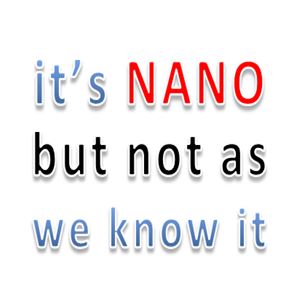Suddenly nanomedicine is on the tip of everyone’s tongue, but ask those typically clued-up about science and technology to define it: the answers may be surprisingly inconsistent
The Wikipedia article on nanomedicine may tell you much of what you need to know, but that’s the problem: it’s well over 8,000 words long! What you really need is a helpful introductory video:
The market for nanomedicine was valued at $78.54 billion in 2012 and is expected to reach over $177 billion in 2019, according to recently published research.
Here’s some more detail from that Wikipedia Article:
Why is nanomedicine different?
What distinguishes nanomedicine from the rest of nanotechnology turns out to be its greatest challenge.
It’s the fact that in nanomedicine we aren’t just involved in creating a new technology at the nano-scale: most of the technology in our field already is very, very old (dating back to the dawn of life) and comes down to us without any documentation from the manufacturer.
Our first job is to get more insight into exactly how this ancient and minuscule apparatus actually works, so that we can at least fix it when it breaks down. With a bit of luck, we may eventually be able to work out how to improve upon it using our own technology, but the temptation to try to do this before we fully understand it is just as big a driving force.
Nanomedicine ranges from the medical applications of nanomaterials, to nanoelectronic biosensors, and even possible future applications of molecular nanotechnology.
The biological and medical research communities have exploited the unique properties of nanomaterials for various applications (e.g., contrast agents for cell imaging and therapeutics for treating cancer).
Terms such as biomedical nanotechnology, nanobiotechnology, and nanomedicine are used to describe this hybrid field.
Functionalities can be added to nanomaterials by interfacing them with biological molecules or structures.
The size of nanomaterials is similar to that of most biological molecules and structures; therefore, nanomaterials can be useful for both in vivo and in vitro biomedical research and applications.
Thus far, the integration of nanomaterials with biology has led to the development of diagnostic devices, contrast agents, analytical tools, physical therapy applications, and drug delivery vehicles.
Nanomedicine seeks to deliver a valuable set of research tools and clinically useful devices in the near future.
The National Nanotechnology Initiative expects new commercial applications in the pharmaceutical industry that may include advanced drug delivery systems, new therapies, and in vivo imaging.
Neuro-electronic interfaces and other nanoelectronics-based sensors are another active goal of research.
Further down the line, the speculative field of molecular nanotechnology believes that cell repair machines could revolutionize medicine and the medical field.
The video was a talk given by Professor Maria Kavallaris from the Australian Centre for Nanomedicine at the University of New South Wales, Australia.
She was speaking at an event called ISS2013: Nanoscience in Sydney, Australia, July 2013.


